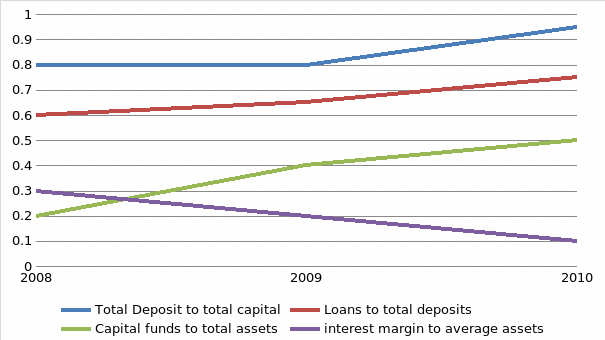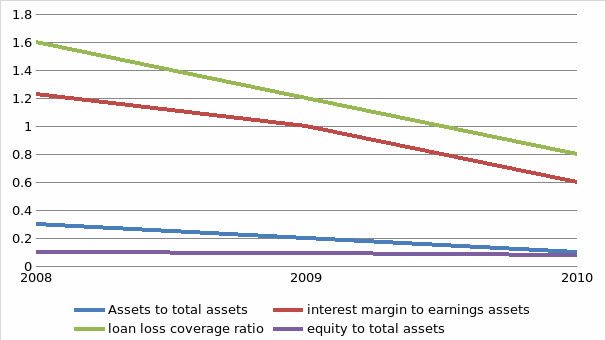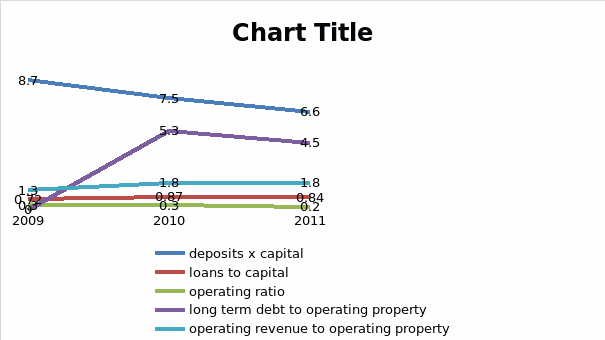Introduction
HSBC is a bank that operates in many international locations and its main services include business, treasury and private banking services to institutional, corporate and personal clients. The branch in UAE has focused to those customers who would like products that are in line with Islamic principles. Their Asset side products offered include: agricultural products, commercial, consumer, small and medium enterprise facilities, treasury and financial institution requirements as well as commodity financing. Liability side products include deposit schemes that enable customers to invest funds such as current accounts, savings accounts, term deposits for different maturities, certificates of investments and basic banking accounts. Other facilities include bonds and guarantee services, online banking, letters of credit, both local and international remittances, debit cards, payment of utility bills, export bills collection and assigning local and export bills, e-facilities such as e-statements, lockers, phone banking and deposit-taking ATMs.
Looking at their financial statements one will note that they are quite detailed with lots of financial items, which are specific to the bank, and understanding them requires referral to the notes accompanying the financial statements. Financial statements for last two years are provided which can surely help in performing trend analysis and understanding how the bank has performed over the last two years.
Significant accounting policies adopted by the HSBC
Islamic Banking – it has adopted Islamic banking in doing business in the UAE
Revenue recognition- revenues are documented after rendering the services. Some revenues embody reimbursements of expenditure incurred on a proxy basis of administered hotel properties as well as franchisees. Nevertheless, such costs are related chiefly to payroll expenditure at managed establishments where HSBC is the source of employment. Moreover, because the reimbursements are effected based on the costs accrued with no extra margin, such revenues, as well as corresponding expenses make no impact on the company’s net income and operating incomes.
Goodwill and Intangible Assets- it arises in relation to acquisitions, incorporating the gaining of organization contracts. HSBC does not amortize goodwill as well as insubstantial assets with vague lives. Insubstantial assets, having finite lives in most cases are amortized on the straight-line manner over their particular helpful lives. The management reviews all goodwill as well as intangible assets to establish impairment by contrasting their reasonable values to the actual book values yearly, or upon happening of a prompting event. Impairment fees, if any, are acknowledged in working results.
The management measures loan impairment, with the basis laid on the current value of anticipated prospective cash flows, which is reduced at the original valuable loan interest rate, or the collateral floated fair value. For loans impaired, HSBC establishes a particular impairment cost reserve for the disparity between the registered loan investment and the current cost of the anticipated prospect cash flows or maybe the predictable just worth of the security. HSBC applies the rule of loan impairment individually to the portfolio’s all loans and thus does not aggregate loans purposely to engage in such policy. For impaired loans, the management recognizes interest revenue in the form of cash.
Changes in accounting policy
In the past year, the changing economic situation had a considerable effect on the financial institutions. Many financial institutions were put in financial positions, which left them struggling to manage their interest rates effectively. This was brought about due to high-reduced rates of interest the financial institutions were receiving. Another factor was high competition in the industry, general market transformation, changing industry trends, economic fluctuations, and worse of all credit crunches. The past year was a big challenger for financial institutions, particularly, the banks to efficiently set their growth and expansion plans in an economic environment that continues to be witnessed.
The financial sector is affected by the financial crisis leading to the collapse of financial institutions, which should be providing liquidity to boost economic growth. Many fail because they are unable to recover and balance off their books after the crisis. There is also another reason as to why financial institutions are finding it difficult to operate in the current environment: mismanagement of credit facility. Taking an example of 2007/2008 crisis the banks acted unresponsively by giving credit working in the bank without evaluating the credit goodness of the person. Loans being the asset of the bank will fail the bank when credit takers are unable to repay this loan.
If they have determined the criterion then it is capitalized. After it has been capitalized, it is depreciated or amortized according to the company policy. This policy may reduce profits at the beginning of a certain project, which relate to the research development and the following years will report huge profit.
Property and plant equipment are depreciated using write off cost less residual value. It means the asset of the company is depreciated on straight-line method. This reduces profitability at a uniform figure throughout the life of the equipment
The financial performance
Despite the recent turbulent global economy, HSBC is performing well and they are able to maintain a sound financial health. Withstanding the downturn and surging ahead is not an easy task. According to the consolidated revenues in the year, 2010 were improved from 2009 levels; earnings per share grew and cash from operations increased.
If we are to look at the debt to asset ratios alone, the picture is positive. A debt to equity ratio of less multiples is less risky. From 2008 to 2010, we can see that debt levels have actually continually been decreasing. The cash flow statement shows that in the year 2008 when the recession began, the bank immediately realized a profit and positive cash flows. We can see that the cash flow from the operating activities at least improved immediately from 2009 to 2010 with positive figures. There were no more massive liabilities again in 2008 and 2010 because the bank finally responded with equally drastic measures to curb the amount of damage that would be caused by financial crisis of 2008. It is a sensible management decision but the amount of debt to be cleared will take a long time to clear assuming their performance for the next decade which will remain on a decent level.
In terms of investing, we can also see a dramatic change within the bank from 2008 to 2010. There was a huge profit, which they used to invest in order to make them competitive in the country. This is because there are sizeable capital expenditures for 2010 in response to the new technology they need to incorporate to their operations. The kind of investment that flowed inside the bank was still mostly from stakeholders that is why the cash flow under the investing category was positive.
Under the financing activities, we can see that bank was still strong because little bowing activities are recorded. They were able to change their financial situation within a year as expected of a giant bank with a lot of excess divisions and employees. The solvency ratio of the company indicates that they are expected of a strong bank although it could still be improved greatly. The ratio indicates a healthier bank if the ratio is above one. It is better if the figure is even bigger. Since the amount of current assets is obviously greater than the liabilities of the bank, it merely means that the company will easily pay. It does not, however, provide a critical basis for its future earning potential as it merely describes the financial liquidity of the company.
Average total deposits to average total capital of the bank were unstable because they came down and then went up, from the financial statement deposits of the branch increased from the year 2008 to 2010. This is captured in the graph below. The increase of customers who were taking loans are shown that the people’s purchasing power increased that is why they are able and willing to take loans which they can pay. The increase in loans to the banks were faster because of the introduction of Sharia law in the activities, however, the capital funds did not increase at a higher rate as customer loans.
The rise on deposits caused the increase in capital as experienced by the banks lead to increasing in loans. Therefore, the decrease of Capital to total assets occurred because deposits were increasing. Similarly, interest margin to average total assets decreased which is an implication of reduced bank profitability.

The graph above shows the trend of total deposit to total capital, which appears to be on the upward trend. However, loans to total deposits appear to be stable as compared to total deposit to total capital. There is a slight fluctuation in the growth rate exhibited by these two ratios but it is minute. This situation can be abnormal in conventional system, however, there is no interest charged on loans taken.
The banks’ ability to generate revenue that would give above the break-even point is measured by the interest earned. From this case it is clear that earnings to total assets also increased, unless the interest accrued was due to closed accounts. Increase in equity to total assets ratios improved the guard against risk caused by debts. There is an increased level of loan protection as indicated by the increased Loan loss coverage ratio within the two years (2008/2009). There is less risk for business since the Loan to debt deposit was on the rise; Lastly deposit times capital has also increased for the three years an implication that the return to the shareholders was improving.
It is clear from the graph that there was improvement in the profitability of the bank. This is because the operating revenue has been increasing from year to year giving a positive operating ratio. The operating ratio is very crucial because it gives the management an overview on how the company faired on. It is impossible for a bank with a reduced operating ratio to serve customers. Most of the banks, which showed a near negative operating ratio, were bailed out. The long–term debt to operating property ratio showed a reduction meaning that the company reduced reliance on long-term debt to finance their operations.

From the graph above it can be noted that all the ratios that is current assets to total assets, interest margin to earning asset, loan loss coverage ratio, and equity to total assets have shown a downward trend. These ratios are showing a negative result meaning that the bank’s ability to cover interest paid out by interest earned is reducing. The ability of the bank also to cover total assets by equity is reducing indicating that the bank was relying on credit to finance their operations. However, the difference is so small that one can note that the capital structure of the bank is not so risky because the rate is not even equal to one. The bank can acquire more credit facility to finance their operations in UAE.
Total interest income decreased between 2008 and 2009 before increasing between 2009 and 2010. Total interest expense decreased between 2008 and 2009 before increasing slightly between 2009 and 2010. Provisions for loan increased between 2009 and 2008 but decreased from 2009 to 2010. Total fees and other income showed an upward trend between the three years; the same case applies to general and administrative expenses. Total of other expenses showed a fluctuation in its change going down between 2010 and 2011 and increasing substantially between 2010 and 2011. The net result is that the revenues increased substantially between the three years.

Usefulness of annual reports
Financial statements form the backbone of any person’s decisions about performance of the company. Without them and their proper understanding, a business manager would just be aiming for his or her company’s objectives in complete darkness. The balance sheet in particular assumes additional importance in that regard. A balance sheet provides the business manager first with the amount of assets that are in use by the company. These include both the current assets and the fixed assets. This information along with the relevant coverage ratios allows the business manager to judge whether the company is operating with the ideal level of fixed assets and current assets. An ideal example would be of a situation where the funds lying in the company’s bank account could be used to purchase marketable securities to earn higher return (Bragg, 26).
The balance sheet tells the business manager about the other side of the accounting equation as well, i.e. the liabilities and equity. This allows the business manager to come to conclusion regarding the ideal level of financing that the company should be holding keeping in view the costs and the long-term goal of the organization (Weetman, 82).
It is important to understand what the balance sheet and income statement represent the company for which they are made. An income statement is not more than a profitability report of any organization. For my current and future reference, it can be used to see where the major expenses have been incurred and appropriate steps taken accordingly. For example, a higher gross profit but a significantly lower net profit would lead me to the conclusion that it is not actually direct costs of production or operations that are hampering my profits but rather the expenses that are considered secondary or general.
In the same way, the balance sheet also presents a current view of the business’s Assets, liabilities, and Equity. This can be applied to the current position by e.g. making decisions regarding keeping the working capital at manageable levels. This is done primarily to have enough liquidity for the company to function i.e. to meet its everyday expenses in a timely and acceptable manner. The Equity and Liabilities side is the same. It can be used in view of the future position to ascertain whether it would be beneficial for the company to have a Debt to Equity ratio in favor of one or the other. This can be dependent on a number of factors, chief among which would be more beneficial to the company in the end.
Conclusion
Based on the above analysis conducted, HSBC has a fair share of financial weaknesses, which can be remedied for further improvement. A company with a good position should have ratios that are adequate in meeting the creditor’s debts as they fall due. In the operating cycle of the firm current assets are converted into cash to provide funds for the payment of current liabilities. A higher current ratio translates to high liquidity for the firm. This implies that the firm will be in a position to meet short-term liabilities.
HSBC is faring better overall than the year before. However, they must find the way to account for their debt taking up much of their revenue. As their return on assets closes in on the break-even point as well as the return on equity, the bank is in great shape to continue their growth into the future (Stephen and Shin, 25). Furthermore, if they could find a way to increase the gross profit margin, this would inevitably increase the net profit. I hope that this would lead to a decrease in the debt ratio with a decrease in total expenses.
Works Cited
Bragg, Steven. Wiley Revenue Recognition: Rules and Scenarios. New York: John Wiley and Sons, 2010. Print
Stephen Morris and Hyun Song Shin. Financial Regulation in a System Context, Brookings Papers on Economy Activity, 2008.
Weetman, Pauline. Financial Accounting: an Introduction. New York: Financial Times Prentice Hall, 2006. Print.